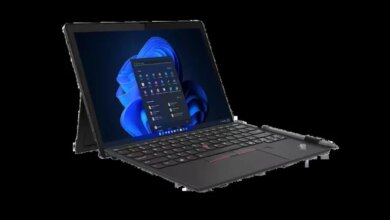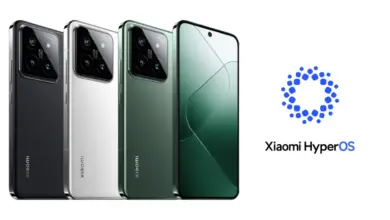
Lenovo IdeaPad Duet 3 and Microsoft Surface Pro 12 represent two distinct categories in the Windows tablet market. Both offer portability, yet target different user needs and budgets.
Lenovo IdeaPad Duet 3 stands out with its compact 11.5-inch display and lightweight design. It is ideal for users who prioritize mobility and basic productivity on the go. The tablet is powered by an Intel N200 processor, which handles light tasks like web browsing and document editing efficiently. It comes equipped with 8 GB LPDDR5 RAM and 256 GB SSD storage, sufficient for students and casual users.
In comparison, the Microsoft Surface Pro 12 features a slightly larger 12-inch PixelSense display. Despite the increased size, it maintains a slim, premium build that exudes elegance and durability. Its Snapdragon X Plus chipset offers much better performance, excelling in multitasking and demanding workloads while remaining energy-efficient thanks to its fanless design. This makes it a strong choice for professional users.
The differences extend to display quality and features. Lenovo’s screen offers 2K resolution with 400 nits brightness, suitable for use in well-lit environments. The Surface Pro 12, however, features a PixelSense 2.2K panel with a 90 Hz refresh rate that delivers smoother visuals and excellent color accuracy for creative professionals or media consumers.
Both tablets support stylus input, but with different capabilities. Lenovo’s Digital Pen 3 comes included, providing responsive input for note-taking and sketching. Microsoft’s Surface Pro 12 benefits from an advanced neural processing unit (NPU) that enables AI-powered Windows features, enhancing workflows and productivity through intelligent assistance.
Memory and storage options also highlight their market positions. Lenovo offers a fixed 8 GB RAM and 256 GB SSD, striking a balance between cost and performance. Surface Pro 12 doubles the RAM to 16 GB LPDDR5X and offers storage configurations from 256 GB up to 512 GB, though storage is not expandable.
Price-wise, Lenovo IdeaPad Duet 3 is a budget-friendly option typically suited for students, casual users, or workers with limited budgets. Its affordability and compactness appeal to those needing a reliable device for everyday tasks. The Surface Pro 12 commands a premium price, reflecting its superior build, performance, and AI capabilities targeted at professionals requiring high mobility and power.
Key differences summarized:
- Display: Lenovo 11.5" 2K, 400 nits vs. Surface 12" PixelSense 2.2K, 90Hz
- Processor: Intel N200 vs. Snapdragon X Plus (fanless)
- RAM & Storage: 8 GB/256 GB vs. 16 GB/256-512 GB (non-upgradable)
- Stylus: Included Digital Pen 3 vs. AI-enhanced stylus support with NPU
- Weight & Size: Lenovo lighter and more compact, Surface premium and elegant
- Price: Lenovo budget-friendly (~$300-$400 range) vs. Surface premium ($900-$1,200 depending on configuration)
Both tablets offer satisfying Windows experiences tailored to different user profiles. The IdeaPad Duet 3 fits users valuing compactness and affordability. The Surface Pro 12 suits those seeking top-tier performance and advanced AI features in a sleek form factor.
Choosing between the two depends on user priorities — whether budget constraints and portability are paramount, or if premium performance and intelligent features justify a higher investment. Either way, Lenovo and Microsoft deliver solid devices that meet diverse needs in the competitive tablet landscape.





